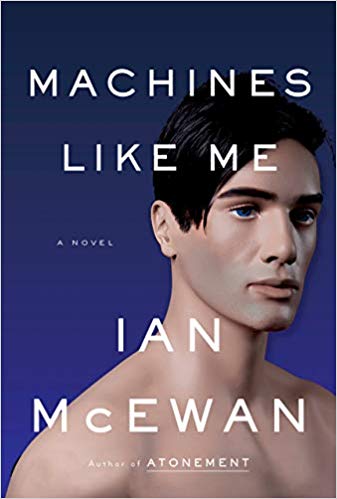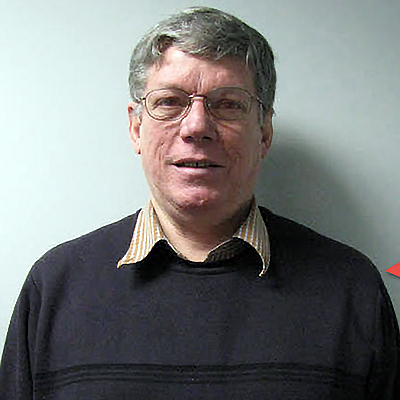The history of computing can be divided into an Old Testament and a New Testament: before and after electronic digital computers and the codes they spawned proliferated across the Earth. The Old Testament prophets, who delivered the underlying logic, included Thomas Hobbes and Gottfried Wilhelm Leibniz. The New Testament prophets included Alan Turing, John von Neumann, Claude Shannon, and Norbert Wiener. They delivered the machines.
Alan Turing wondered what it would take for machines to become intelligent. John von Neumann wondered what it would take for machines to self-reproduce. Claude Shannon wondered what it would take for machines to communicate reliably, no matter how much noise intervened. Norbert Wiener wondered how long it would take for machines to assume control.
Wiener’s warnings about control systems beyond human control appeared in 1949, just as the first generation of stored-program electronic digital computers were introduced. These systems required direct supervision by human programmers, undermining his concerns. What’s the problem, as long as programmers are in control of the machines? Ever since, debate over the risks of autonomous control has remained associated with the debate over the powers and limitations of digitally coded machines. Despite their astonishing powers, little real autonomy has been observed. This is a dangerous assumption. What if digital computing is being superseded by something else?
Electronics underwent two fundamental transitions over the past hundred years: from analog to digital and from vacuum tubes to solid state. That these transitions occurred together does not mean they are inextricably linked. Just as digital computation was implemented using vacuum tube components, analog computation can be implemented in solid state. Analog computation is alive and well, even though vacuum tubes are commercially extinct.
There is no precise distinction between analog and digital computing. In general, digital computing deals with integers, binary sequences, deterministic logic, and time that is idealized into discrete increments, whereas analog computing deals with real numbers, nondeterministic logic, and continuous functions, including time as it exists as a continuum in the real world.
Imagine you need to find the middle of a road. You can measure its width using any available increment and then digitally compute the middle to the nearest increment. Or you can use a piece of string as an analog computer, nearest increment. Or you can use a piece of string as an analog computer, mapping the width of the road to the length of the string and finding the middle, without being limited to increments, by doubling the string back upon itself.
Many systems operate across both analog and digital regimes. A tree integrates a wide range of inputs as continuous functions, but if you cut down that tree, you find that it has been counting the years digitally all along.
In analog computing, complexity resides in network topology, not in code. Information is processed as continuous functions of values such as voltage and relative pulse frequency rather than by logical operations on discrete strings of bits. Digital computing, intolerant of error or ambiguity, depends upon error correction at every step along the way. Analog computing tolerates errors, allowing you to live with them.
Nature uses digital coding for the storage, replication, and recombination of sequences of nucleotides, but relies on analog computing, running on nervous systems, for intelligence and control. The genetic system in every living cell is a stored-program computer. Brains aren’t.
Digital computers execute transformations between two species of bits: bits representing differences in space and bits representing differences in time. The transformations between these two forms of information, sequence and structure, are governed by the computer’s programming, and as long as computers require human programmers, we retain control.
Analog computers also mediate transformations between two forms of information: structure in space and behavior in time. There is no code and no programming. Somehow—and we don’t fully understand how—nature evolved analog computers known as nervous systems, which embody information absorbed from the world. They learn. One of the things they learn is control. They learn to control their own behavior, and they learn to control their environment to the extent that they can.
Computer science has a long history—going back to before there even was computer science—of implementing neural networks, but for the most part these have been simulations of neural networks by digital computers, not neural networks as evolved in the wild by nature herself. This is starting to change: from the bottom up, as the threefold drivers of drone warfare, autonomous vehicles, and cell phones push the development of neuromorphic microprocessors that implement actual neural networks, rather than simulations of neural networks, directly in silicon (and other potential substrates); and from the top down, as our largest and most successful enterprises increasingly turn to analog computation in their infiltration and control of the world.
While we argue about the intelligence of digital computers, analog computing is quietly supervening upon the digital, in the same way that analog components like vacuum tubes were repurposed to build digital computers in the aftermath of World War II. Individually deterministic finite-state processors, running finite codes, are forming large-scale, nondeterministic, non-finite-state metazoan organisms running wild in the real world. The resulting hybrid analog/digital systems treat streams of bits collectively, the way the flow of electrons is treated in a vacuum tube, rather than individually, as bits are treated by the discrete-state devices generating the flow. Bits are the new electrons. Analog is back, and its nature is to assume control.
Governing everything from the flow of goods to the flow of traffic to the flow of ideas, these systems operate statistically, as pulse-frequency coded information is processed in a neuron or a brain. The emergence of intelligence gets the attention of Homo sapiens, but what we should be worried about is the emergence of control.
~~
Imagine it is 1958 and you are trying to defend the continental United States against airborne attack. To distinguish hostile aircraft, one of the things you need, besides a network of computers and early-warning radar sites, is a map of all commercial air traffic, updated in real time. The United States built such a system and named it SAGE (Semi-Automatic Ground Environment). SAGE in turn spawned Sabre, the first integrated reservation system for booking airline travel in real time. Sabre and its progeny soon became not just a map of what seats were available but also a system that began to control, with decentralized intelligence, where airliners would fly, and when.
But isn’t there a control room somewhere, with someone at the controls? Maybe not. Say, for example, you build a system to map highway traffic in real time, simply by giving cars access to the map in exchange for reporting their own speed and location at the time. The result is a fully decentralized control system. Nowhere is there any controlling model of the system except the system itself.
Imagine it is the first decade of the 21st century and you want to track the complexity of human relationships in real time. For social life at a small college, you could construct a central database and keep it up to date, but its upkeep would become overwhelming if taken to any larger scale. Better to pass out free copies of a simple semi-autonomous code, hosted locally, and let the social network update itself. This code is executed by digital computers, but the analog computing performed by the system as a whole far exceeds the complexity of the underlying code. The resulting pulse-frequency coded model of the social graph becomes the social graph. It spreads wildly across the campus and then the world.
What if you wanted to build a machine to capture what everything known to the human species means? With Moore’s Law behind you, it doesn’t take too long to digitize all the information in the world. You scan every book ever printed, collect every email ever written, and gather forty-nine years of video every twenty-four hours, while tracking where people are and what they do, in real time. But how do you capture the meaning?
Even in the age of all things digital, this cannot be defined in any strictly logical sense, because meaning, among humans, isn’t fundamentally logical. The best you can do, once you have collected all possible answers, is to invite well- defined questions and compile a pulse-frequency weighted map of how everything connects. Before you know it, your system will not only be observing and mapping the meaning of things, it will start constructing meaning as well. In time, it will control meaning, in the same way the traffic map starts to control the flow of traffic even though no one seems to be in control.
~~
There are three laws of artificial intelligence. The first, known as Ashby’s Law, after cybernetician W. Ross Ashby, author of Design for a Brain, states that any effective control system must be as complex as the system it controls.
The second law, articulated by John von Neumann, states that the defining characteristic of a complex system is that it constitutes its own simplest behavioral description. The simplest complete model of an organism is the organism itself. Trying to reduce the system’s behavior to any formal description makes things more complicated, not less.
The third law states that any system simple enough to be understandable will not be complicated enough to behave intelligently, while any system complicated enough to behave intelligently will be too complicated to understand.
The third law offers comfort to those who believe that until we understand intelligence, we need not worry about superhuman intelligence arising among machines. But there is a loophole in the third law. It is entirely possible to build something without understanding it. You don’t need to fully understand how a brain works in order to build one that works. This is a loophole that no amount of supervision over algorithms by programmers and their ethical advisers can ever close. Provably “good” AI is a myth. Our relationship with true AI will always be a matter of faith, not proof.
We worry too much about machine intelligence and not enough about self- reproduction, communication, and control. The next revolution in computing will be signaled by the rise of analog systems over which digital programming no longer has control. Nature’s response to those who believe they can build machines to control everything will be to allow them to build a machine that controls them instead.














